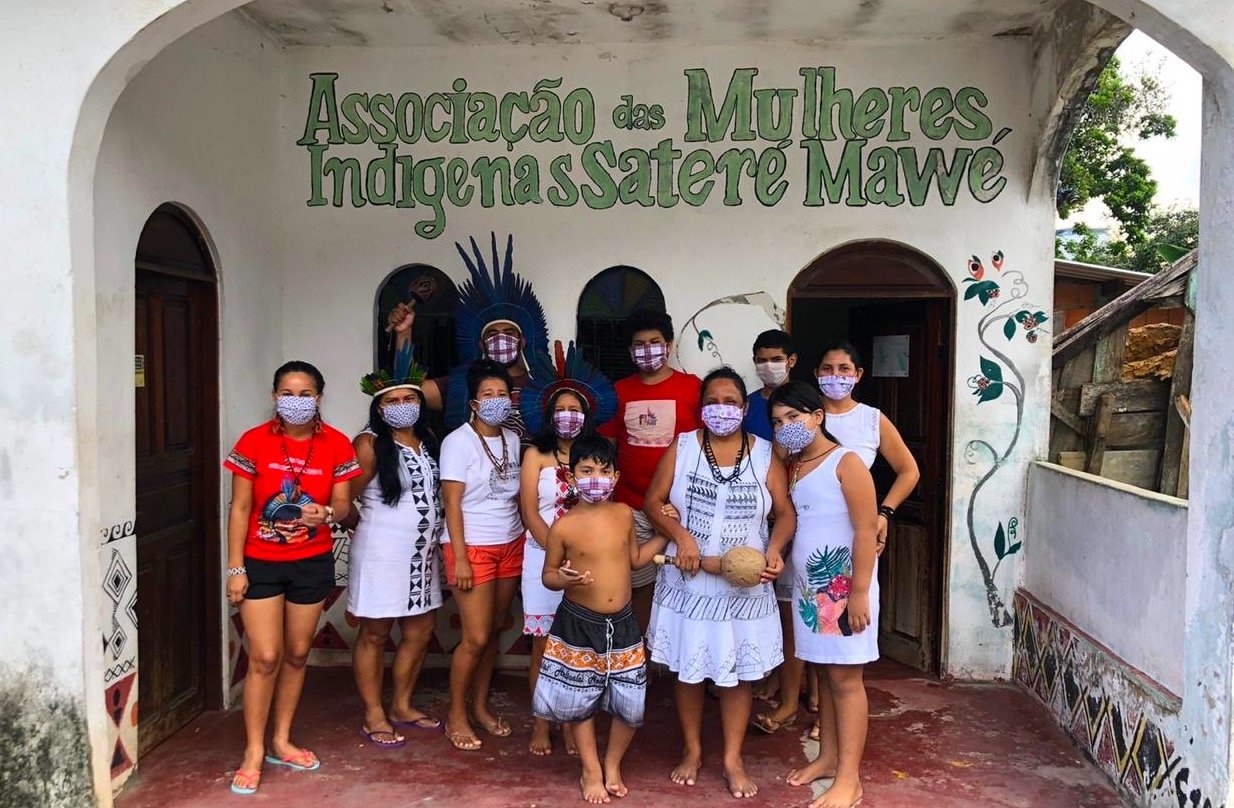Crafts, Soaps and Masks
APE supporting communities working at the edges of the Amazon
Crafts, Soaps and Masks – APE supporting communities working at the edges of the Amazon
by May East, APE-UK Trustee
The coronavirus outbreak likely started at the edge between urban development, human intrusion into biodiverse areas and the Chinese wet markets. In many fields of fundamental and applied ecology, the transition or edge between distinct biological communities is known as the ‘ecotone’. The word is a linguistic blend derived from the Greek eco —’oikos’ or environment, and tone—’tonos’ or tension, meaning a place of high intensity where ecologies are in tension. In these co-evolving edges between social and ecological systems, many surprises are waiting for us.
Ecotones tend to be ‘species-rich’ as they benefit from inputs and resources from both environments, providing unique ecological niches manifested in space and time. The diverse juncture between biological communities is known as the edge. Ecological designers take advantage of the richness of the edge effect, by using naturally occurring turbulence, trade and accumulations to create greater diversity and increased system productivity.
Recently I published a paper as my first attempt to describe ‘sociotone’, or social systems in tension, as a new concept. My paper proposes that, just as it is possible to maximise the edges, ie diversity and productivity between neighbouring biological communities, so it is possible to create a more significant edge effect in society between different social groupings with diverse worldviews, power structures and intentions. The social version of an ecotone aims to provide a framework for new discussions which could influence social life, and lead to understanding complex wholes.
From theory to practice…
After lengthy discussions between APE Trustees and Exec Director, a brief was collectively developed to respond to the imminent Covid-19 epidemic threat to indigenous communities in the Amazon. As in living systems, potential is anchored in a territory and is actualised in nested ways. Therefore our hypothesis was If we take into consideration that the edges between urban centres, indigenous villages and the forest are likely to provide a fertile field for trans-human and trans-species infection, by intentionally strengthening the salutogenesis of the edges we may be able to contribute to the health and well-being of the proximate and greater wholes.
This brief guided the ecotonal investigation to locate indigenous communities and associations living on the periphery of Manaus, the Amazonian capital, with ongoing exchanges between city, villages and forest. The multifaceted make-up of socio-spatial edges of patterns nested within patterns interwoven in families, guilds and social relationships provides a ‘pregnant’ field for serendipitous observation and discovery. And that is how APE’s contribution to the quest – Covid19- threat-Amazon-indigenous-people – is unfolding.
A series of conversations with resourceful contacts Andre Baniwa and Marivelton Bare from FOIRN – Federação das Organizações Indígenas do Rio Negro, the Socio-Ambiental platform, and the investigative journalist Katia Brasil from Amazonia Real, led us to the Sateré Mawé Craftswomen Association – AMISM – composed of an intergenerational group of women living from their traditional crafts on the outskirts of Manaus.
Based next to the Andirá River, the Sateré Mawé indigenous community is known for being the first to ‘domesticate’ guarana and for maintaining a strong cultural and biological identity. This is reflected in their rituals and sophisticated crafts, made from seeds, grasses and wood from the forest. The story goes that in the 70s, a Sateré Mawé widow decided to move to Manaus as she was unable to hunt and gather enough provisions for her seven daughters, and this led lto the creation of four satellite communities in Manaus. Samela Sateré, the fourth generation of craftswomen, became our contact.
APE UK had the opportunity to acquire two months’ crafts production from Sateré Mawé women who had been unable to sell their work in Manaus due to the lockdown and the decline of tourism. With two cases of Covid- 19 infection in one their suburban communities, APE has also supported the acquisition of second-hand sewing machines for the production of protective masks to be distributed amongst the edge communities of the region.
In consultation with the FOIRN leadership we realised that the two most important items to minimise contamination of the 750 indigenous villages of Rio Negro were protective masks and soap. Adopting a sociotone exploratory approach we discovered the collective Club of Mothers without Borders on the outskirts of Manaus, whose raison d’être is to care for the unseen in society. To support their work, they make soaps and syrups. Utilising the same sociotone/ecotone premises APE procured their existent stock of 56 giant artisanal soap bars to send to Rio Negro.
In a typical sociotone evolving complex web of localised relations, Ju Radler, responsible for transporting the soap bars to the 850 indigenous communities of Rio Negro, has now ordered 2,000 masks from the Sateré Mawé craftswomen association and we are exploring how to bring the Mothers without Borders to teach the indigenous communities to make their own soap. Edges are indeed rich of potential and this example shows that they may also provide the resources to deal with the pandemic.
This was the last Amazonian/ Brazilian ‘artivism’ of our much-loved and appreciated co-worker Kenny Young, with whom I have been working for the last three decades, bringing together art, environment and evolution. The work will continue as Kenny’s legacy to the world.


